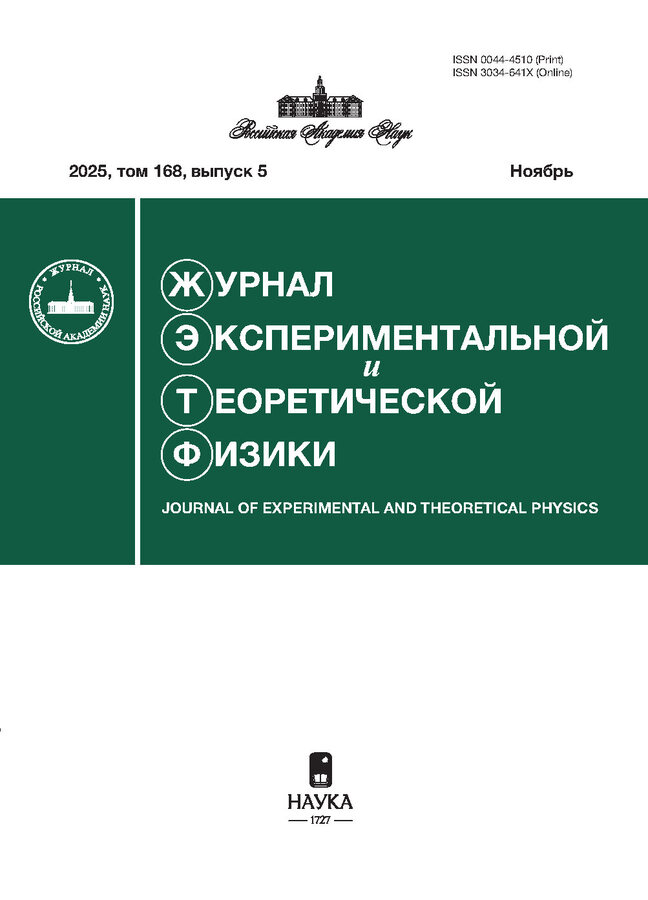Active Brownian Motion of Dust Particles in Quasi-One-Dimensional (Chain) Structures in a Glow Discharge
- Authors: Svetlov A.S.1,2, Kononov E.A.1,2, Trukhachev F.M.1,2, Vasil'ev M.M.1,2, Petrov O.F.1,2
-
Affiliations:
- Joint Institute for High Temperatures, Russian Academy of Sciences
- Moscow Institute of Physics and Technology (National Research University)
- Issue: Vol 164, No 5 (2023)
- Pages: 715-721
- Section: Articles
- URL: https://journals.rcsi.science/0044-4510/article/view/247329
- DOI: https://doi.org/10.31857/S0044451023110020
- EDN: https://elibrary.ru/PNATSW
- ID: 247329
Cite item
Full Text
Abstract
We present the experimental results of our study of the formation and dynamics of chain structures by active Brownian particles in a DC glow discharge. The mechanism of active particle motion is associated with the conversion of laser radiation by particles into the energy of their own (nonthermal) motion. Through our analysis of the motion parameters (the trajectories, the root-mean-square displacement, the kinetic energy) as a function of the intensity of laser radiation incident on the particles, we have shown that the particles are active Brownian ones. It is possible to control their motion without changing the discharge parameters. It has been experimentally found that the formation of chain structures and their stable state are not violated under kinetic heating of the particles as their kinetic energy increases by more than an order of magnitude. This suggests the realization of a mechanism for the formation of chains with a strong coupling between the particles that is not explained by the simple (ion) wake behind the upstream particle.
About the authors
A. S. Svetlov
Joint Institute for High Temperatures, Russian Academy of Sciences; Moscow Institute of Physics and Technology (National Research University)
Email: svetlov.anton.s@gmail.com
125412, Moscow, Russia; 141701, Dolgoprudnyi, Moscow oblast, Russia
E. A. Kononov
Joint Institute for High Temperatures, Russian Academy of Sciences; Moscow Institute of Physics and Technology (National Research University)
Email: svetlov.anton.s@gmail.com
125412, Moscow, Russia; 141701, Dolgoprudnyi, Moscow oblast, Russia
F. M. Trukhachev
Joint Institute for High Temperatures, Russian Academy of Sciences; Moscow Institute of Physics and Technology (National Research University)
Email: svetlov.anton.s@gmail.com
125412, Moscow, Russia; 141701, Dolgoprudnyi, Moscow oblast, Russia
M. M. Vasil'ev
Joint Institute for High Temperatures, Russian Academy of Sciences; Moscow Institute of Physics and Technology (National Research University)
Email: svetlov.anton.s@gmail.com
125412, Moscow, Russia; 141701, Dolgoprudnyi, Moscow oblast, Russia
O. F. Petrov
Joint Institute for High Temperatures, Russian Academy of Sciences; Moscow Institute of Physics and Technology (National Research University)
Author for correspondence.
Email: svetlov.anton.s@gmail.com
125412, Moscow, Russia; 141701, Dolgoprudnyi, Moscow oblast, Russia
References
- И. С. Арансон, Активные коллоиды, УФН 183, 87 (2013)
- I. S. Aranson, Active Сolloids, Phys. Usp. 56, 79 (2013).
- C. Bechinger, R. DiLeonardo, H. L¨owen et al., Mod. Phys. 88, 045006 (2016).
- A. Einstein, Annalender Physik 322, 549 (1905).
- D. Selmeczi, L. Li, L. I. Pedersen et al., Eur. Phys. J. Spec. Top. 157, 1 (2008).
- H. C. Berg, Springer Science and Business Media (2008), p. 134.
- M. E. Cates, Rep. Prog. Phys. 75, 042601 (2012).
- S. Sanchez, A. N. Ananth, and V. M. Fomin, J. Amer. Chem. Soc. 133, 14860 (2011).
- W. F. Paxton, K. C. Kistler, and C. C. Olmeda, J. Amer. Chem. Soc. 126, 13424 (2004).
- J. Li and V. V. Singh, ACS Nano 8, 11118 (2014).
- V. Nosenko, F. Luoni, A. Kaouk et al., Phys. Rev. Res. 2, 033226 (2020).
- K. Arkar, M. M. Vasiliev, O. F. Petrov et al., Molecules 26, 561 (2021).
- I. I. Fairushin, M. M. Vasiliev, and O. F. Petrov, Molecules 26, 6974 (2021).
- X. G. Koss, E. A. Kononov, I. I. Lisina et al., Molecules 27, 1614 (2022).
- O. F. Petrov, K. B. Statsenko, and M. M. Vasiliev, Sci. Rep. 12, 8618 (2022).
- A. S. Svetlov, M. M. Vasiliev, E. A. Kononov et al., Molecules 28, 1790 (2023).
- R. F. Ismagilov and A. Schwartz, Angew. Chem.Int. Ed. Engl. (2002), Vol. 41, pp. 652-654.
- A. Perro, S. Reculusa, S. Ravaine et al., J. Mater. Chem. 15, 3745 (2005).
- F. M. Trukhachev, R. E. Boltnev, A. A. Alekseevskaya et al., Phys. Plasmas 28, 093701 (2021).
- F. M. Trukhachev, R. E. Boltnev, A. A. Alekseevskaya et al., Plasma Phys. Rep. 49, 129 (2023).
- E. A. Kononov, M. M. Vasiliev, E. V. Vasilieva et al., Nanomaterials 11, 2931 (2021).
- О. С. Ваулина, Э. А. Саметов, Е. А. Лисин, ЖЭТФ 158, 399 (2020).
- I. I. Lisina, E. A. Lisin, O. S. Vaulina et al., J. Phys.: Conf. Ser. 1147, 012112 (2019).
- I. I. Lisina and O. S. Vaulina, Phys. Scripta 89, 105604 (2014).
- J. E. Allen, Phys. Scripta 45, 497 (1992).
- J. Eymeren and G. Wurm, Mon. Not. Roy. Astron. Soc. 420, 183 (2012).
- M. Lampe, G. Joyce, G. Ganguli et al., Phys. Plasmas 7, 3851 (2000).
- I. H. Hutchinson, Phys. Rev. E 85, 066409 (2012).
- M. M. Vasiliev, O. F. Petrov, A. A. Alekseevskaya et al., Molecules 25, 3375 (2020).
- S. Jahanshahi, H. Lowen, and B. Hagen, Phys. Rev. E 95, 022606 (2017).
- H. Qian, M. P. Sheetz, and E. L. Elson, Biophys. J. 60, 910 (1991).
- H. L¨owen, J. Phys. Cond. Matt. 21, 474203 (2009).
- В. Е. Фортов, А. Г. Храпак, С. А. Храпак и др., Пылевая плазма, УФН 174, 495 (2004).
- В. Е. Фортов, Г. Е. Морфилл, Комплексная и пылевая плазма. Из лаборатории в космос, Физматлит, Москва (2012).
- О. Ф. Петров, М. М. Васильев, Йе Тун и др. ЖЭТФ 147, 372 (2015).
Supplementary files










